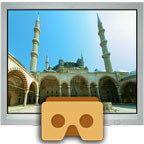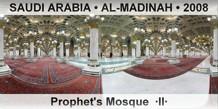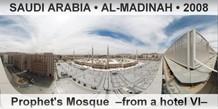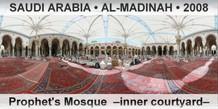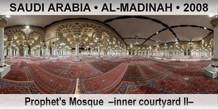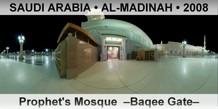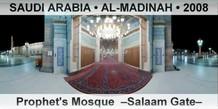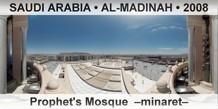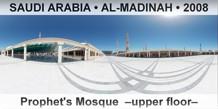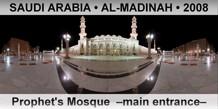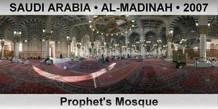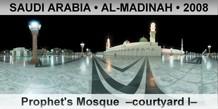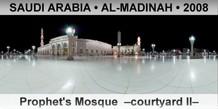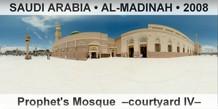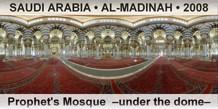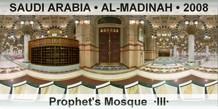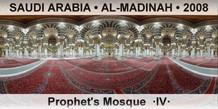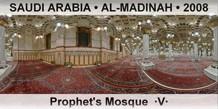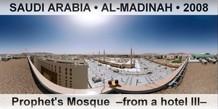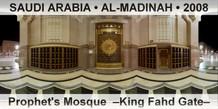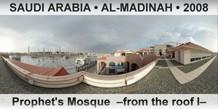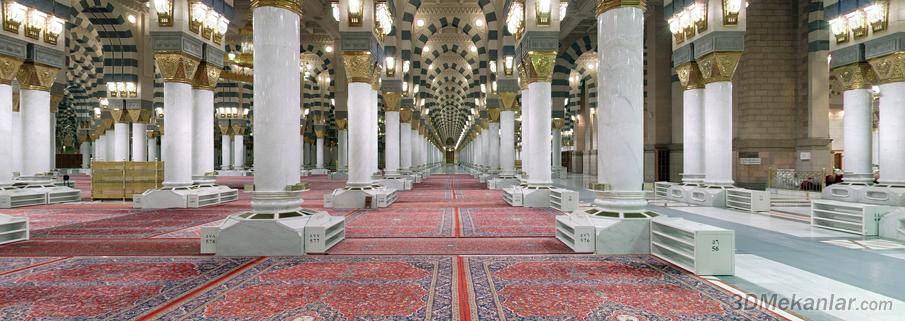
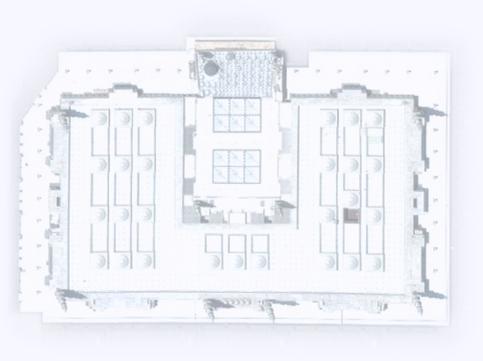
|
Prophet's Mosque - 3D Virtual Tour
Prophet's Mosque virtual tours can be started by clicking the preview window or by downloading the stand-alone versions. Just drag the mouse to the direction you want to look. Use the scroll wheel to zoom at the details. Press F9 to get a list of the 3D sites you downloaded (residing in the same directory). To install the listed sites as a screensaver press F5. Our advise is to install all the sites, including Prophet's Mosque, as a screensaver. When the screensaver starts, a random site is chosen and shown around automatically (this gives the impression of looking at a documentary in HD quality). To see the usage of other keys press F1. Press Ecs to exit.
———
Al-Masjid al-Nabawi, often called the Prophet's Mosque, is a huge mosque situated in the city of al-Madinah, Saudi Arabia. As the final resting place of the Islamic Prophet Muhammad, it is considered the second holiest site in The Prophet's Mosque is the second holiest mosque in the world after al-Haram in Mecca. (Al-Aqsa in Jerusalem comes in third.) It is a major pilgrimage site and many people who perform the Hajj go on to al-Madinah before or after Hajj to visit the mosque.
History
The original mosque was built by Prophet Muhammad (s.a.w), next to the house where he settled after his journey to al-Madinah in 622 AD. The original mosque was an open-air building with a raised platform for the reading of the Qur'an. It was a rectangular enclosure of 30 m × 35 m (98 ft × 110 ft), built with palm trunks and mud walls, and accessed through three doors: Bab Rahmah to the south, Bab Jibril to the west and Bab al-Nisa' to the east. The basic plan of the building has since been adopted in the building of other mosques throughout the world.
Inside, Muhammad (s.a.w) created a shaded area to the south called the suffah and aligned the prayer space facing north towards Jerusalem. When the qibla (prayer direction) was changed to face the Kaaba in Mecca, the mosque was re-oriented to the south. The mosque also served as a community center, a court, and a religious school. Seven years later (629 AD/7 AH), the mosque was doubled in size to accommodate the increasing number of Muslims.
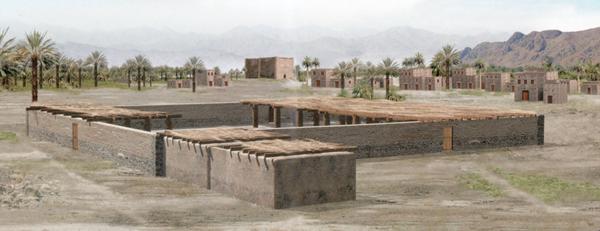 Subsequent Islamic rulers continued to enlarge and embellish the mosque over the centuries. In 707,
Umayyad Caliph Al-Walid ibn Abd al-Malik (705-715) replaced the old structure and built a larger one in its place,
incorporating the tomb of Muhammad (s.a.w). This mosque was 84 m × 100 m (280 ft × 330 ft) in size,
with stone foundations and a teak roof supported on stone columns.
The mosque walls were decorated with mosaics by Coptic and Greek craftsmen,
similar to those seen in the Umayyad Mosque in Damascus and the Dome of the Rock in Jerusalem
(built by the same caliph).
The courtyard was surrounded by a gallery on four sides, with four minarets on its corners.
A mihrab topped by a small dome was built on the qibla wall.
Subsequent Islamic rulers continued to enlarge and embellish the mosque over the centuries. In 707,
Umayyad Caliph Al-Walid ibn Abd al-Malik (705-715) replaced the old structure and built a larger one in its place,
incorporating the tomb of Muhammad (s.a.w). This mosque was 84 m × 100 m (280 ft × 330 ft) in size,
with stone foundations and a teak roof supported on stone columns.
The mosque walls were decorated with mosaics by Coptic and Greek craftsmen,
similar to those seen in the Umayyad Mosque in Damascus and the Dome of the Rock in Jerusalem
(built by the same caliph).
The courtyard was surrounded by a gallery on four sides, with four minarets on its corners.
A mihrab topped by a small dome was built on the qibla wall.
Abbasid Caliph al-Mahdi (775-785) replaced the northern section of Al-Walid's mosque between 778 and 781 to enlarge it further. He also added 20 doors to the mosque; eight on each of the east and west walls, and four on the north wall.
During the reign of the Mamluk Sultan Qalawun, a dome was erected above the tomb of Muhammad (s.a.w) and an ablution fountain was built outside of Bab al-Salam. Sultan Al-Nasir Muhammad rebuilt the fourth minaret that had been destroyed earlier. After a lightning strike destroyed much of the mosque in 1481, Sultan Qaitbay rebuilt the east, west and qibla walls.
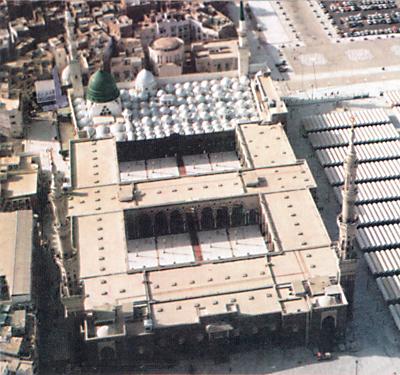 The Ottoman sultans who controlled al-Madinah from 1517 until World War I also made their mark.
Sultan Suleiman the Magnificent (1520-1566) rebuilt the western and eastern walls of
the mosque and built the northeastern minaret known as al-Suleymaniyya.
He added a new mihrab (al-Ahnaf) next to Muhammad's (s.a.w) mihrab (al-Shafi'iyyah) and placed
a new dome covered in lead sheets and painted green above Muhammad's (s.a.w) house and tomb.
The Ottoman sultans who controlled al-Madinah from 1517 until World War I also made their mark.
Sultan Suleiman the Magnificent (1520-1566) rebuilt the western and eastern walls of
the mosque and built the northeastern minaret known as al-Suleymaniyya.
He added a new mihrab (al-Ahnaf) next to Muhammad's (s.a.w) mihrab (al-Shafi'iyyah) and placed
a new dome covered in lead sheets and painted green above Muhammad's (s.a.w) house and tomb.
During the reign of Ottoman Sultan Abdülmecid (1839-1861), the mosque was entirely remodeled with the exception of Muhammad's (s.a.w) Tomb, the three mihrabs, the minbar and the Suleymaniyya minaret. The precinct was enlarged to include an ablution area to the north. The prayer hall to the south was doubled in width and covered with small domes equal in size except for domes covering the mihrab area, Bab al-Salam and Muhammad's (s.a.w) Tomb. The domes were decorated with Qur'anic verses and lines from Qasida al-Burda (Poem of the Mantle), the famous poem by 13th century Arabic poet Busiri. The qibla wall was covered with glazed tiles featuring Qur'anic calligraphy. The floors of the prayer hall and the courtyard were paved with marble and red stones and a fifth minaret (al-Majidiyya), was built to the west of the enclosure.
After the foundation of the Kingdom of Saudi Arabia in 1932, the mosque underwent several major modifications. In 1951 King Ibn Saud (1932-1953) ordered demolitions around the mosque to make way for new wings to the east and west of the prayer hall, which consisted of concrete columns with pointed arches. Older columns were reinforced with concrete and braced with copper rings at the top. The Suleymaniyya and Majidiyya minarets were replaced by two minarets in Mamluk revival style. Two additional minarets were erected to the northeast and northwest of the mosque. A library was built along the western wall to house historic Qur'ans and other religious texts.
In 1973 Saudi King Faisal bin Abdul Aziz ordered the construction of temporary shelters to the west of the mosque to accommodate the growing number of worshippers in 1981, the old mosque was surrounded by new prayer areas on these sides, enlarging five times its size.
The latest renovations took place under King Fahd and have greatly increased the size of the mosque, allowing it to hold a large number of worshippers and pilgrims and adding modern comforts like air conditioning. He also installed twenty seven moving domes at the roof of Masjid Nabawi.
Architecture
As it stands today, the mosque has a rectangular plan on two floors with the Ottoman prayer hall projecting to the south. The main prayer hall occupies the entire first floor. The mosque enclosure is 100 times bigger than the first mosque built by Muhammad (s.a.w) and can accommodate more than half a million worshippers.
The mosque has a flat paved roof topped with 24 domes on square bases. Holes pierced into the base of each dome illuminate the interior. The roof is also used for prayer during peak times, when the 24 domes slide out on metal tracks to shade areas of the roof, creating light wells for the prayer hall. At these times, the courtyard of the Ottoman mosque is also shaded with umbrellas affixed to freestanding columns. The roof is accessed by stairs and escalators. The paved area around the mosque is also used for prayer, equipped with umbrella tents.
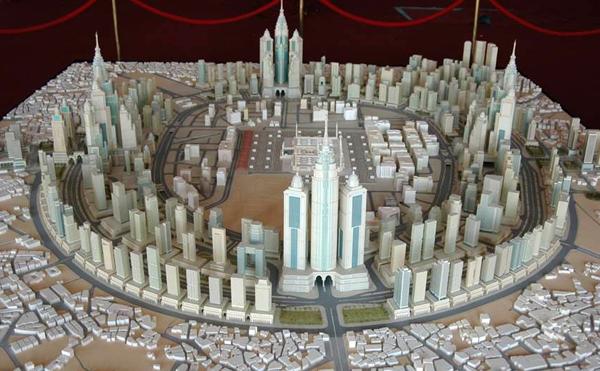
Plans for future buildings around the Prophet's Mosque.
The north facade has three evenly spaced porticos, while the east, west and south facades have two. The walls are composed of a series of windows topped by pointed arches with black and white voussoirs. There are six peripheral minarets attached to the new extension, and four others frame the Ottoman structure. The mosque is lavishly decorated with polychrome marble and stones. The columns are of white marble with brass capitals supporting slightly pointed arches, built of black and white stones. The column pedestals have ventilation grills that regulate the temperature inside the prayer hall.
This new mosque contains the older mosque within it. The two sections can be easily distinguished: the older section has many colorful decorations and numerous small pillars; the new section is in gleaming white marble and is completely air-conditioned.
The open courtyard of the mosque can be shaded by folded, umbrella-like canopies.
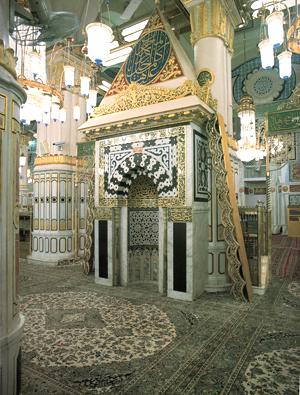
Ar-Rawdah an-Nabawiyah
The heart of the mosque houses a very special but small area named ar-Rawdah an-Nabawiyah, which extends from Muhammad's (s.a.w) tomb to his pulpit. Pilgrims attempt to visit and pray in ar-Rawdah, for there is a tradition that supplications and prayers uttered here are never rejected. Entrance into ar-Rawdah is not always possible (especially during the Hajj season), as the tiny area can accommodate only a few hundred people. Ar-Rawdah has two small gateways manned by Saudi police officers. The current marble pulpit was constructed by the Ottomans. The original pulpit was much smaller than the current one, and constructed of palm tree wood, not marble. Ar-Rawdah an-Nabawiyah is considered part of Jannah (Heaven or Paradise).
It is prescribed for the one who visits the mosque to pray two rak’ahs in the Rawdah or whatever he wants of naafil prayers, because it is proven that there is virtue in doing so. It was narrated from Abu Hurayrah that Muhammad (s.a.w) said: “The area between my house and my minbar is one of the gardens (riyaad, sing. rawdah) of Paradise, and my minbar is on my cistern (hawd)” Narrated by al-Bukhaari, 1196; Muslim, 1391.
And it was narrated that Yazeed ibn Abi ‘Ubayd said: “I used to come with Salamah ibn al-Akwa’ and he would pray by the pillar which was by the mus-haf, i.e. in the Rawdah. I said, ‘O Abu Muslim, I see that you are keen to pray by this pillar!’ He said, ‘I saw that the Prophet (peace and blessings of Allaah be upon him) was keen to pray here.’” Narrated by al-Bukhaari, 502; Muslim, 509.
Source: wikipedia

|
This work is part of a project we did in the Holy Lands, as invitees of
al-Madinah Municipality. |

